Introduction to the Galapagos: A Triple Bottom Line Perspective
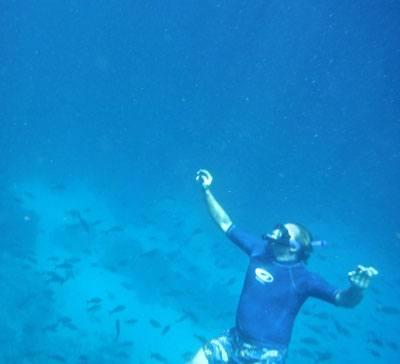

I've just returned from a trip to the Galapagos Islands that prompts my rare use of cliché superlatives like "amazing" and "once in a lifetime." It was both of those things and plenty more. Naturally, looking at the Galapagos from a triple bottom line point of view made the whole experience even more complex and interesting. Over the next week or two, we'll get into some of the details and stories. For starters, I thought a little background and introduction would make sense.
As our readers probably know, the Galapagos Islands are the sparsely populated volcanic archipelago 600 miles west of the Ecuadorian mainland made famous by Charles Darwin's visit in the early 1800s. Rife with endemic species of wildlife, 97 percent of the islands are a tightly restricted national park. On the rest of the land are about 30,000 islanders making their living mostly through tourism and fishing.
At present, a limited number of tourists per year are granted the privilege of touring the islands on boats operated by one of several dozen tour companies that have been granted a license to do so. These tour operators follow a strict set of approved itineraries and make scheduled stops at designated landings where naturalists guide visitors on short hikes. It's a system that, by and large, has proven quite effective at minimizing environmental impact, but questions remain about maintaining a viable economy for islanders as well as exactly how much tourism should be allowed to grow (if at all).
We sailed on board the Letty, one of EcoVentura's three 20-passenger touring vessels. Life aboard the boat is highly structured with three or four prescribed landings and activities during the day, excellent food, and the near constant presence of a knowledgable naturalist to talk to. One of ours, Ivan, is also a talented musician. Moving from island to island is done mostly at night. It's not my usual laissez faire style of travel but makes perfect sense given the priorities of the national park and the sheer amount of things worth seeing that one couldn't possibly do on their own.
Each landing and hike sets out to investigate a different natural feature or group of animals -- almost none of which express even the remotest fear of humans.
By far the most common are sea lions, cousins of the California variety, who laze about on the beaches and rocks, periodically venturing into the ocean to hunt for fish. Marine iguanas are to be found in large numbers, mostly sitting in prehistoric silence until low tide when they venture into the sea to eat algae -- a strange anomaly among lizards.
And then there are the birds. Blue footed boobies, red footed boobies, nazca boobies, frigate birds, gulls, flamingoes and finches abound, each one occupying a different ecological niche. Despite never being much of a bird watcher, the tales of how they survive and thrive captivated me and most everyone else.
The namesake of the island -- the tortoises -- are the only animal that is difficult to find, owing to their near disappearance at the hand of invasive species and historical hunting. However, by collecting eggs before they can be eaten and raising the baby tortoises in a hatchery, populations have been successfully stabilized on many islands, notably the island most populated by humans, Santa Cruz, where over 3,500 roam.
As this series progresses, we'll learn more about not only the natural environment, but also about the people who live on the islands and the way that the various stakeholders are seeking a balance to continue restoration of their ecosystem.
Finally, for those of you who can't get enough of cute animals, here's a little video I made of baby sea lions playing in the surf. In true Galapagos fashion, the harshness of nature enters the picture in the form of a hapless marine iguana who becomes a plaything for the sea lions. Fortunately for the iguana, the sea lions eventually tire of taunting him. Enjoy:
Ed Note: Accommodations, travel and guidance in the Galapagos were courtesy of EcoVentura, which runs 7-night cruising expeditions around the islands.
Funding Opportunities for Local Community Nonprofits

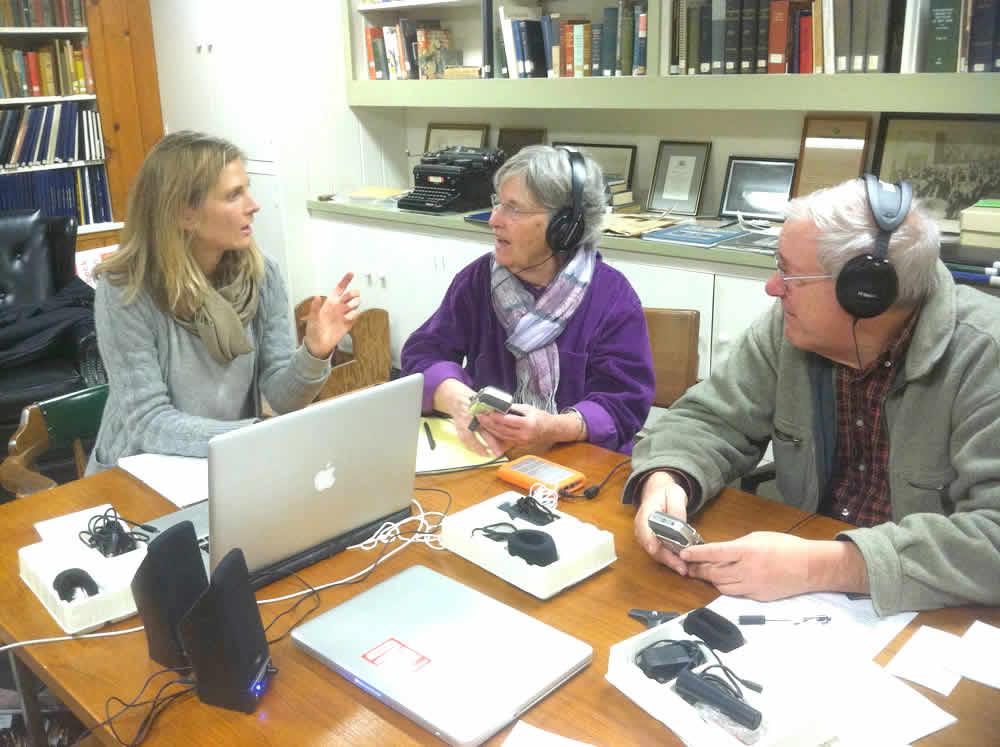
By Leah B. Thibault
When we think of what distinguishes a town from its neighbor, we often speak of the businesses: the local coffee shop or deli; the funky boutique or bookstore; all important to the identity and economic well-being of a community.
But there is a second, equally vital, but more often overlooked group of service providers and nonprofits that tend to their communities’ physical, mental and emotional well-being.
These service providers are the daycares that make it possible for parents to work outside the home, or the hospitals that tend to all who need care regardless of their insurance coverage, or the art facilities and libraries that provide educational opportunities and cultural enrichment.
These service providers, many of them nonprofits, are often dependent on donations or grant funding, which can be unpredictable or restricted to very specific uses, making large-scale capital projects, like renovation or construction, difficult. It is notable, then, that over 1,200 community facilities were able to access flexible, affordable capital through the federal New Markets Tax Credit Program between 2003 and 2012, according to a national study by the New Markets Tax Credit Coalition.
Because of the New Markets Program, renovation is underway in Hudson, New York on a historic armory building that will serve as an educational and social hub for the city’s residents. While Hudson is largely know as a vacation destination for antique-shopping enthusiasts, many of the city’s year-round residents struggle with finding their place within an increasingly gentrifying area, as well as earning the worst educational outcomes in New York state.
The 26,000-square-foot facility will house the Hudson Area Library; Perfect 10, a nonprofit that works to prepare 4th- through 9th-grade girls for college; the Berkshire Union Free School District, which provides high school completion courses for young men unable to attend traditional schooling; and a new senior center operated by the city. In one building, residents of all ages, ethnicities and economic background will be able to access materials and programs to help them achieve their education goals as well as have a community space that is for the benefit of the residents, not the tourists.
Across the map in another tourism-based economy, the residents of Marfa, Texas are looking to develop their own community meeting grounds. As part of a larger downtown revitalization project, the Crowley Pavilion and Crowley Theatre are receiving much-needed expansions and upgrades. At the outdoor Pavilion, the local flea market, farmer’s market and regular community meals are held, making this open-air structure a vital meeting place for the city’s 2,191 residents. Similarly, the Crowley Theatre is made available to local nonprofits and community groups free of charge, giving this increasingly-artistic community a home for film screenings, musical performances and dramatic presentations.
While community facilities may not be the same level of economic driver as a new manufacturing facility, they are crucial to a community’s identity and potential. This is perhaps why studies show there has been an 82 percent increase in New Markets investment in education, a 53 percent increase in funding for community services, and a 32 percent increase in healthcare financing over the past five years. These jumps come as the value of these types of companies and places becomes more apparent, and the social being-well of a community becomes considered as much as its economic well-being.
Image credit: Galvan Community Center
Leah B. Thibault is Director of Operations for CEI Capital Management, LLC.
Rooftop Solar? This Texas Town Says 'Not in My Backyard'
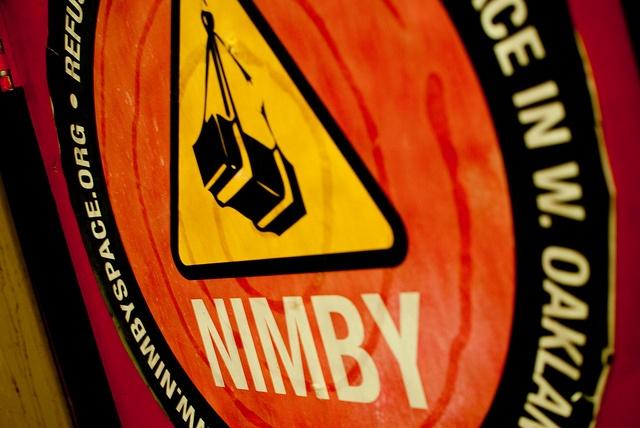

NIMBY (not in my backyard) is alive and well in a Fort Worth, Texas suburb -- and this time with a solar twist.
Back in December, the North Richland Hills town council passed an ordinance requiring homeowners whose roofs face the street to get permission to install rooftop solar power systems. The ordinance also states that solar panels can’t extend “beyond roof edges.” The town council’s reason for the ordinance, according to its website, is to “balance benefits to [the] homeowner with any potential impacts to the surrounding property owners.” That means some homeowners in North Richland Hills face an obstacle to installing rooftop solar, along with a special use permit fee that the Dallas Morning News reports could cost up to $600.
After receiving a petition from citizens, on Jan. 26 the town council agreed to “revisit” the ordinance on solar panels. The council will survey residents to decide what changes citizens want to the ordinance, and any amendments to it will go through a public hearing process. The special use permit fee will be waived while the ordinance is being reviewed.
North Richland Hills is not the only place where NIMBY sentiments have popped up relating to solar power. The Associated Press reports that there is opposition to a proposed $25 million solar power plant on the outskirts of the largest city in South Dakota. Although Sioux Falls and Minnehaha County planners approved a permit for the solar plant, some neighbors said they will appeal it because they are concerned about its appearance. Construction is slated to begin in 2016, and the plant is expected to be operational by the end of that year.
Renewable Energy World mentions a couple in West St. Louis County, Missouri who spent years fighting their local zoning board to be able to install solar panels on the roof of their Victorian house. Jim and Frances Babb’s homeowners association gave them approval. But when they filed for a permit the city tried to pass an ordinance that would ban solar panels on the front or sides of the roof. The ordinance the town passed ended up allowing rooftop panels, and the Babbs received approval. However, the aldermen voted 6-0 to deny the couple.
Apparently, neighbors had complained about how the panels would look. Eventually, the Babbs were able to have the system installed, but they were still fighting the city council, which wanted them to apply for a new permit and have their system inspected, as of spring 2014.
Solar panels are not the only form of renewable energy to face opposition. More than 10 years ago, plans to build the first offshore wind farm, Cape Wind, in the U.S. were announced. Cape Wind would consist of 130 wind turbines off Cape Cod. Unfortunately, the project has met with opposition from neighbors. Last month, NPR reported that two of the offshore wind farm’s biggest customers abandoned contracts to purchase power from the wind farm.
Image credit: starfive
British public want government action over business ethics, survey says


The majority of the British public believes that policy to promote ethical practices among big businesses should be prioritised by the next government, a new poll shows.
The ComRes poll, commissioned by the Forum of Private Business, the small business membership organisation, showed that over three quarters (78%) of adults in Britain agree that big businesses are more likely to prioritise profits over high ethical standards, while 74% of adults agree that the majority of big businesses have no concern for small business owners in the UK.
The poll of over 2,000 British adults revealed that the majority (76%) agree that the next government should penalise big businesses that act unfairly towards small businesses.
The poll coincides with the Forum's launch of its Business Ethics Pledge, which calls on big business to commit to a five-point plan to protect and promote small British businesses ahead of the election.
Phil Orford, chief executive of the Forum of Private Business said: “The view of the British public is clear: we are facing a crisis of trust in big business and the UK wants the next government to respond accordingly, safeguarding the UK’s small business community.
“From tax avoidance and high street domination to late payment and supply chain abuse – every week our members tell us that some of the biggest names in British business are threatening their livelihoods.
“There must be a balance between the need to attract the world’s biggest companies to Britain, ensuring we have the best environment for business, and protecting the interests of the UK’s hardworking independent small business people."
However, Philippa Foster Back CBE, director of the Institute of Business Ethics, countered the call for direct government action saying: “Business should set its own agenda, not wait for government to set one for it. Unfortunately there are still too many cases of late payment and poor treatment of suppliers and customers. Each time one company commits such an offence, it lays the entire business community open to a backlash from the public and invites government intervention. Ultimately that is expensive and damaging to everybody. The IBE offers practical advice to businesses which want to avoid that.”
The IBE’s own survey results conducted annually over the past 11 years into the attitude of the British public to business behaviour indicates that consistently between 47%-59% consider business to behave ethically (58% in 2014).
3p Weekend: 11 Sustainable U.S. Wineries


With a busy week behind you and the weekend within reach, there’s no shame in taking things a bit easy on Friday afternoon. With this in mind, every Friday TriplePundit will give you a fun, easy read on a topic you care about. So, take a break from those endless email threads, and spend five minutes catching up on the latest trends in sustainability and business.
A few months back, we ran a roundup of the top 10 sustainable U.S. breweries. As the list made its rounds on social media, a few of you asked us to give a nod to the wine-lovers out there. You asked, we answered. Break out those glasses, and toast the weekend with a sip from one of these 11 sustainable U.S. wineries.
1. Jackson Family Wines, California and Oregon
Jackson Family Wines boasts vineyards in France, Italy, Chile and Australia. Here in the U.S., the family-owned winery makes tasty reds and whites at more than 25 wineries throughout California -- from Sonoma to Santa Barbara -- as well as Willamette Valley, Oregon. Wine newbies may recognize its Kendall-Jackson label, while enthusiasts gush over its Champ de Rêves, one of the premier producers of high-altitude Pinot Noir in California's Anderson Valley.The brand has grown tremendously since it was founded in 1982, but the Jackson family, which still runs and operates the company, stayed true to their commitment of land stewardship and biodiversity. Less than half of the company's land holdings are planted to vines, leaving the remainder to nature. And, all of the Jackson Family vineyards are certified under the Certified California Sustainable Winegrowing (CCSW) and Sustainability in Practice (SIP) programs, as well as Low Input Viticulture & Enology (LIVE).
2. Sunset Hills Vineyard, Virginia
Sunset Hills Vineyard set out to preserve the environment that serves as a backdrop for its lush vineyards, located about an hour outside Washington, D.C. To that end, the company installed 245 solar panels on the south-facing roofs of its winery and case storage buildings, supplying 100 percent of the company's electrical needs.The panels produce 50,000 kilowatt hours of electricity each year, making it the largest producer of solar energy in Loudoun County, Virginia.
3. Fetzer Wines, California
Fetzer is serious about wines. Luckily for the planet, they're pretty serious about waste, too: Since 1990, Fetzer Vineyards has been tracking and reducing waste it sends to landfills. Through company-wide efforts, it has reduced that waste by 96 percent -- from 1,724 tons in 1990 to only 67 tons in 2013 -- all while doubling wine production. The winery even became a member of the U.S. Zero Waste Business Council last year.
Additionally, Fetzer's Hopland Winery became the first winery in California to go 100 percent renewable back in 1999. Thanks to the largest solar array in the wine industry -- an 899-kilowatt photovoltaic system atop the winery's production buildings -- the Hopland location now generates all of its own power.
4. Kelley Fox Wines, Oregon
Kelley Fox Wines' Maresh Vineyard is a Demeter-certified biodynamic vineyard. It was first planted in 1970 by Jim and Loie Maresh. From the beginning, Jim had the foresight to avoid vineyard monoculture, planting local crops like walnut, hazelnut and fruit trees to enhance biodiversity. Maresh is famous for its Pinot Noir, as well as the lush, natural landscape that greets visitors passing through for a wine tasting.5. Red Tail Ridge Winery, New York
Located in the Finger Lakes region of New York, Red Tail Ridge Winery is the state's first LEED gold-certified winery. Its wine-processing building was made using recycled materials and energy-efficient design. An installed geothermal system cuts energy use, while a sand-filled basin behind the main building naturally filters storm water.
Red Tail is still a fairly new winery, bottling its first batches in 2009, and its operators want to "wait until the vines mature before considering going organic or chemical-free." But they already utilize natural processes to reduce the use of pesticides and hope to continue cutting chemical use in the coming years.
6. Stonestreet Estate Vineyards, California
Headquartered in Healdsburg, California, Stonestreet Wines focuses on land stewardship and biodiversity -- resulting in healthy grapes and soil. Of the 5,100 acres that make up the estate, less than the 20 percent is planted to vines. The rest is left as open space for native plants and animals.
Stonestreet also practices water-saving irrigation, and its vineyards are third-party certified sustainable under the Certified California Sustainable Winegrowing and Sustainability in Practice (SIP) programs.
7. Deep Creek Cellars, Maryland
This small winery in the mountains of western Maryland calls itself the "natural wine specialist." "From vineyard to barrel, and barrel to bottle, we seek to reduce the carbon footprint of our business [and] eliminate chemicals (especially sulfites)," the company writes on its website. Deep Creek emphasizes the low-tech or even the no-tech in its winemaking process, resulting in a naturally dry wine with minimal impact on the environment.
8. Villa Milagro Vineyards, New Jersey
Located in Finesville, New Jersey, Villa Milagro's vineyard uses organic and sustainable practices and is a safe haven for migratory and resident birds. Sections of the 104-acre property are dedicated to “conservation strips” and natural woodlands where native New Jersey wildflowers and plants provide food and shelter for birds and other native species.
9. Benziger Family Winery, California
Benziger Family Winery has emerged as an agricultural success story in drought-stricken California. During the state's three-year drought, the Sonoma County vineyard managed to decrease water usage by 25 percent while maintaining yields.Benziger combines biodynamic farming practices -- from cover crops to compost -- with technology such as soil moisture probes and leaf porometers to determine water needs and plant stress. It also recycled and reused 3 million gallons of water through its wetland process, where microbes naturally clean the water for reuse in the vineyard.
10. Snoqualmie Vineyards, Washington
Snoqualmie Vineyards is Washington's largest certified organic vineyard. The vineyard reduces soil erosion through a green cover of beneficial native grasses and cereal grains, which also provide habitat to attract beneficial insects.The company has also managed to cut its water and energy use by 30 percent in the last five years and emphasizes sustainable packaging.
11. Baker & Brain, California
Founded by camping buddies and sustainability enthusiasts Josh Baker and Matt Brain, this California winery began as a way to showcase responsible farming. Baker & Brain practices small-lot, minimal intervention winemaking:
"We truly believe that wine is made in the vineyard. We pursue a very minimalistic approach to winemaking; intervening only when we’re sure it’s absolutely necessary and allowing the fruit to express itself as it will," the company writes on its website.
The winery also generates all of its own power through solar energy and recycles 100 percent of its waste.
Editor's Note: An earlier version of this post referred to Kelley Fox Wines' Oregon vineyard as Momtazi vineyard.
Image credits: 1) Flickr/Emiliano De Laurentiis 2) Flickr/Udo Schröter 3) Flickr/Alex Brown 4) Flickr/Maureen Didde 5) Flickr/Jordan Johnson
Mary Mazzoni is the Senior Editor of TriplePundit. You can follow her on Twitter @mary_mazzoni.
Ecotourism in Ecuador: Eating Chocolate Like a Locavore
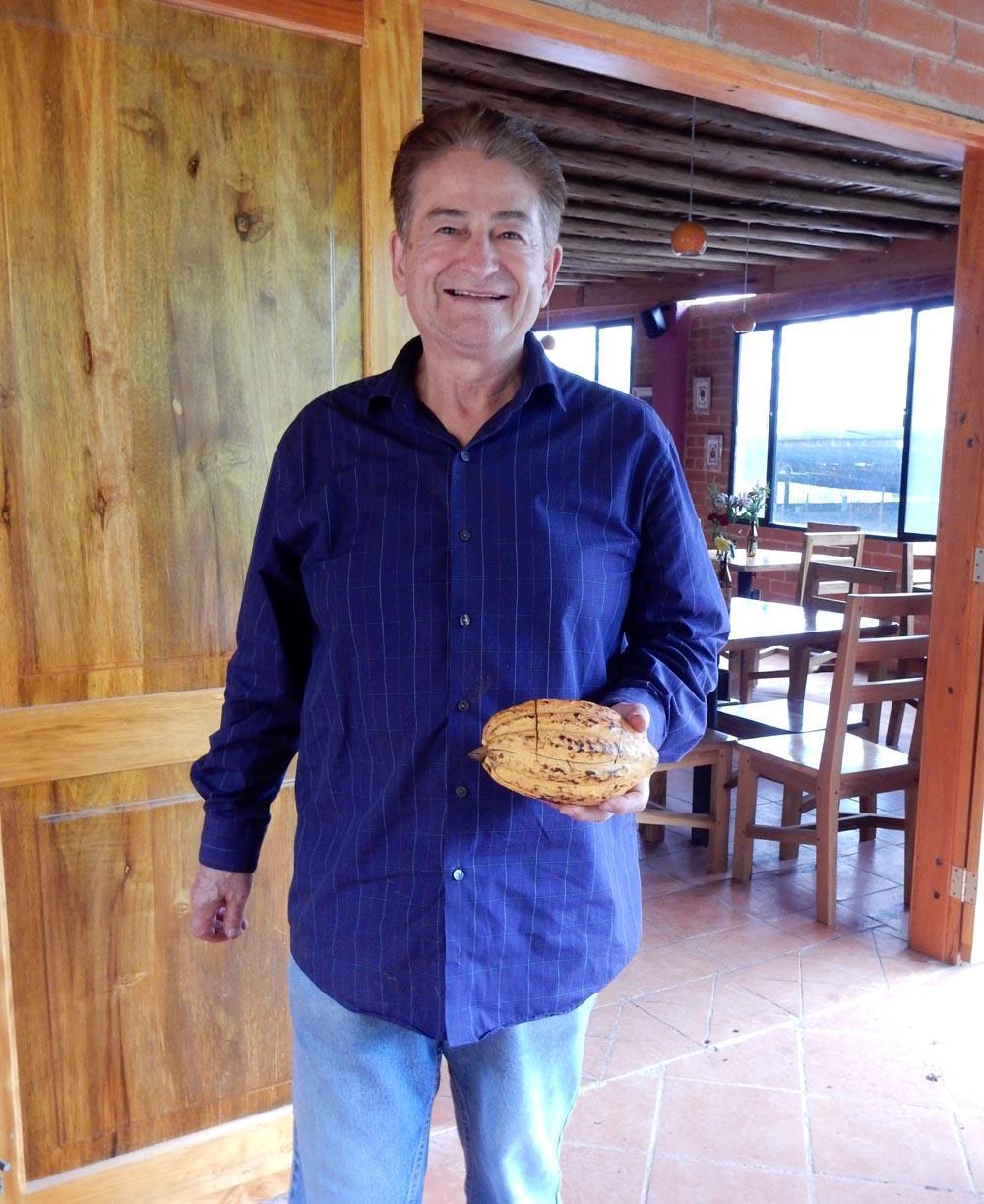

When I think seriously about becoming a locavore, I cringe at the thought of giving up coffee, avocados and especially chocolate. Seventy percent of the world's cacao beans are cultivated in Africa, according to Francisco Meza of El Quetzal de Mindo, a chocolatier in the cloud forest of Ecuador.
Now, a couple of chocolate makers are operating out of Mindo, making a handmade product with locally-sourced beans. They use Ecuadorian Cacao Nacional, a cacao bean that is grown on small family farms in Puerto Quito, 40 miles from Mindo.
These chocolatiers are helping to turn Mindo into a chocolate heaven, where visitors can take tours and get schooled in the chocolate-making process.
Upon arriving, my family quickly signed up for a chocolate-making tour with Arte Sano Mindo, a business that was recently acquired by Jackeline Ramirez, a Chilean immigrant.
We spent an evening in her chocolate factory sampling cacao syrup, then toasting, grinding and pressing the beans. Jackeline runs a very small-scale operation, selling the product out of her storefront.
She brought a warmth to the story of chocolate, and her passion for this delightful bean was paramount. Finally, she served a chocolate fondue with fresh fruit to end the evening.
A few days later, I paid a visit to El Quetzal, farther up the hill. This business was founded by Jose Meza of Riobamba, Ecuador (and later a U.S. resident for decades before returning to Ecuador). The business creates small batches of hand-wrapped chocolate, and also operates a restaurant and two-room hotel.
During the tour, Francisco Meza, Jose's brother, said they are the largest employer in Mindo, with 20 employees.
Cooperative Nueva Esperanza, a network of 80 small farms cultivating between 1 and 10 hectares. Francisco says that although the farms aren't certified organic, they follow organic practices. Farmers mix several crops on their farms, including papaya, banana and passion fruit to avoid pest problems.
"These farms are not monocultures," says Francisco. "As a result, they have lower volumes and the farming practices can't be mechanized. The way we are doing it over here takes more labor. It is probably cost prohibitive in other places, but it is a way of life here."
El Quetzal encourages cacao farmers to sell more than just a raw product, requesting them to at least ferment and dry the cacao beans before selling them. This greatly increases the price the farmers could receive for their product, and also reduces the weight making it easier for transport.
The brothers hope one day the farmers may even offer a finished product, but Francisco said there is hesitation. Perhaps farmers are concern about making the upfront investment, because they are uncertain of the market demand.
During the chocolate tour, Francisco showed us around their gardens, with sugar cane, coffee plants, banana trees and other common foods that many Americans consume daily. The tour ends with a sample of a brownie, served with ginger and cacao syrup.
After the tour, I asked Francisco about his take on the tourism boom in Mindo and related concerns. He said that Mindo is the No. 1 birding destination and he is concerned about the impact of construction on habitat.
Although the Mindo-Nambillo Ecological Reserve protects a large around around Mindo, the other side is not protected. He sees properties being bought up by city dwellers, which raises the prices of real estate for all and can have an economic impact on locals as well.
Images by Sarah Lozanova
"Frozen" Sequel? Let Kids Educate Disney About Climate Change


Maybe it's just the approach that's missing.
Just recently, the Obama administration reached out to Walt Disney Co. with a simple request -- or so it probably seemed to Rear Adm. Robert Papp, the administration's special representative for the Arctic and former commander of the U.S. Coast Guard.
As Papp recounted at an Arctic Frontiers Conference in Tromsø, Norway this January, his mission was to ask the 92-year-old company if the Obama administration could use Disney's new blockbuster, "Frozen," to teach kids about climate change.
After all, who would be more likely to connect with kids than a film production company that engineered the concept of the Mousketeers and taught kids about basic social values and responsibility? And what characters could better engage the imagination and concern of family film enthusiasts than two girls who, despite their foibles and make-believe origins, seem able to conquer the challenges of both climate and foe?
So, when Disney's answer came back "no," Papp -- and the administration -- were genuinely shocked.
"What’s striking about Disney’s rejection is how it stands out against the Disney's past participation in public awareness campaigns," explains ThinkProgress writer Jessica Goldstein. "Disney didn’t always shy away from the prospect of being associated with potentially unappealing subject matter." Venereal disease, taxes, coming-of-age topics that shape young outlooks have all made it to the company's feel-good, ultimately upbeat movies.
Even climate change has made it to a Disney release. Yes, although they didn't garner the attention that "Frozen" or "Snow White" received, the Disney archives do contain several environmental topics. In this case, Disney co-produced "Earth," a documentary that was designed to tell viewers about the environmental challenges facing the planet's wildlife.
Why then, would a Disney exec reportedly tell Papp no, suggesting that "[here] at Disney, it’s in our culture to tell stories that project optimism and have happy endings ... "?
Various critics have weighed in on this mystery, with some suggesting that the present-day film producer shapes its repertoire by the political leanings of its backers. That may indeed be true (what nine-decade-old American corporation wouldn't?). But maybe it's just as simple as the Disney exec says: Climate change is scary, and there is no known, absolute cure to date. And while Disney will convert gonorrhea and syphilis germs into humorous-looking armies that look villainous but beatable to get across a public service message, it's not so sure it can craft a scenario that will honestly tell its viewers climate change can be stopped.
And that, more than the prospect of rising seas and melting glaciers, should really scare us.
When a film producer that has built its reputation on inspiring the imagination of children doesn't believe in its own ingenuity, it's sobering. It's also time to look elsewhere for the answer.
What troubles me about the Obama administration's pitch is its linear viewpoint. Apparently, sending the special representative for the Arctic to negotiate the use of "Frozen" was all there was to it. If the company didn't agree, and couldn't see the merits of using a mega-seller like "Frozen" for the world's environmental good, well then, bad on them. Children will not hear about the need for climate change advocacy. Generations may go uneducated about why climate change requires action now, and what they can do about it.
The funny thing is, however, it's our own kids that have already pioneered that effort.
In 2011, a group of teenagers, along with nonprofits that focus their attention on the welfare of children, sued the United States government in order to force federal agencies to plan and strategize against global warming.
"This lawsuit relies upon the long-established legal principle of the Public Trust Doctrine," explains OurChildrensTrust.org, "which requires our government to protect and maintain survival resources for future generations."
While the Supreme Court refused to hear their case last year, the plaintiffs have garnered national attention for climate change initiatives. Similar state suits have also been launched in Oregon, Massachusetts and New Mexico. Whether they win the suits or not, the kids have already won by encouraging federal (and most state) agencies to act on climate change.
Maybe it's the adults here that need to be reassured that the villains that have the potential to transform "a fantasy kingdom" into an underwater wasteland can be beat back with social activism. If the Obama administration wants Disney to step up to the plate and help inspire education on this topic, well then, send in the kids.
Let them tell Disney why climate change should be the next backdrop for heroic youth that must battle the elements and the adversaries. From the sounds of it, the Obama administration, and the state legislatures of Oregon, Massachusetts and New Mexico, could benefit from a little positive PR. There's nothing like negotiating with the other party across the courtroom to find compromise and inspire action.
Since no one speaks louder than the parents of a future consumer base, Disney will probably be listening. And the myriad of corporations that have financially benefited from the movie and rely on its continued success for future products, like Kellogg's (the makers of the "Frozen"-themed sugar-covered cereal), Delta Children (canopied children's bed) and Huffy (girl's bike), will be listening, too.
Papp and the Obama administration shouldn't feel snubbed, though. Disney's list of successful movies includes at least 18 treatments that never made it to film, largely because Disney's sixth-sense told him they'd never fly. So, maybe the movie moguls do know best. They just need a little convincing from their viewer base that unabated climate change, pitted against the fearless ingenuity of a young hero and heroine, would make one rockin' blockbuster adventure story.
Image of Disney "Frozen" DVD and Kellogg's cereal - Mike Mozart of TheToyChannel/JeepersMedia
Domtar Brings Transparency to the Pulp and Paper Industry

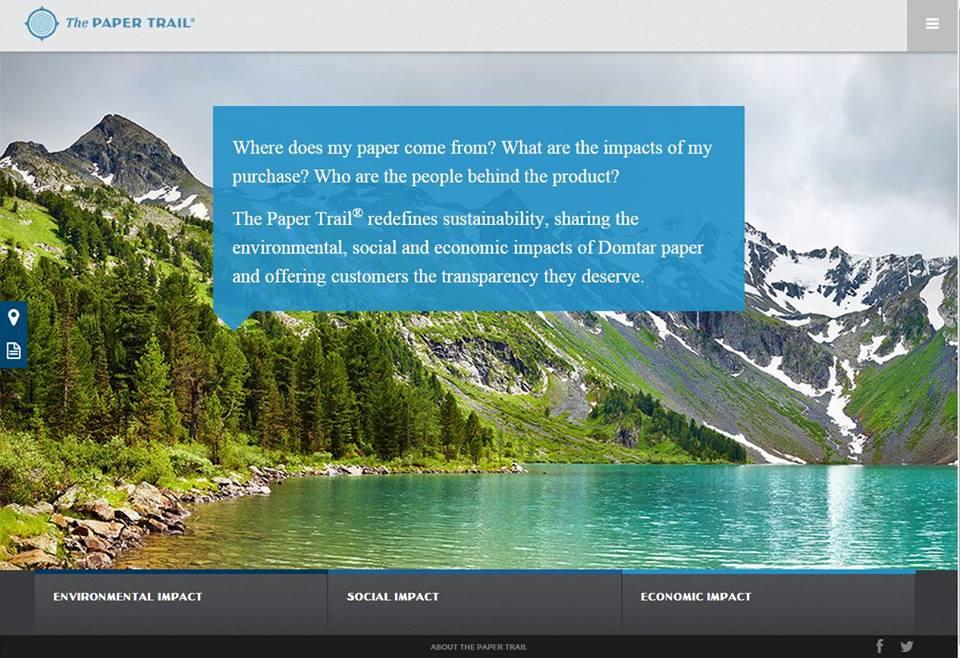
Companies are talking more and more about transparency, but sourcing a product from raw material to the warehouse or store shelf is not always the easiest task. Buyers of office supplies who are interested in the social and environmental impacts of their paper purchases, however, may want to consider checking out The Paper Trail, a Web-based interactive tool that tracks the products coming out of the paper manufacturer Domtar’s 13 mills in North America.
The Paper Trail first launched in 2011, but Domtar recently added social and economic data to the site. Now users can glean more information on how the company operates across it supply chain, from greenhouse gas emissions and renewable energy consumption to local community involvement and charitable donations.
Let’s say you wanted to order 10 rolls of Domtar’s envelopes, and you wanted to an idea of the overall environmental impact of that purchase. You would learn that the paper used in those envelopes was sourced from the company’s Windsor Mill in Quebec. Next, you could see that the pulp used for the envelopes traveled about 140 miles, or equal to the distance between Dallas and San Antonio. The trees felled for pulp would include hickory, fir, elm, ash, birch and maple. About 460 pounds of waste was generated from the manufacture of those envelopes; half of that waste was somehow reused. That order resulted in 1,056 pounds of Scope 1 greenhouse gas emissions and 16 pounds of Scope 2 emissions.
If you are curious about the economic or social impacts of another mill, move west to the Great Lakes region and scope out the company’s Marathon Paper Mill in Rothschild, Wisconsin. The mill has operated in this town of 5,000 for over 100 years, and it's now the largest employer in Rothschild, providing more than 400 jobs. Employees have access to advanced manufacturing education programs and also participate in an annual river cleanup project. Besides its economic multiplier effect it has due to its contracts with other local companies, the company’s employees also serve on the boards of directors of local nonprofits.
Overall, will every data point satisfy all stakeholders? Of course not, but the level of data is a strong suck, and admittedly, it turned into a time suck for me — in a good way as a learning tool.
The Paper Trail is available on desktops, tablets and smartphones, and it incorporates technologies like Google Maps to take users on a geographic tour based on the products selected. And while it is a compelling tool for those vested in learning more about the effects the pulp and paper industry has on the environment, it is also useful to someone who just wants to learn more about the commercial forestry sector. It is also a model for companies who know their customers want to know more about its supply chain, but want to move beyond simply uploading a .PDF report about responsible sourcing to a website — creating an interactive experience that can not only help to retain customers, but attract new ones, too.
Image credits: Domtar Facebook Page
Based in California, Leon Kaye has also been featured in The Guardian, Clean Technica, Sustainable Brands, Earth911, Inhabitat, Architect Magazine and Wired.com. He shares his thoughts on his own site, GreenGoPost.com. Follow him on Twitter and Instagram.
SVN 'Best Advice' Series: Never Stop Learning From Your Customers
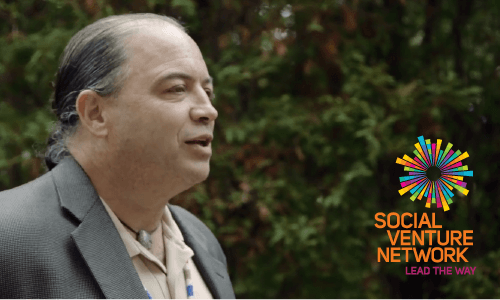

Join Social Venture Network for the 2015 SVN Spring Conference, April 16-19, in San Diego. The event is open to active members, affiliates, family members and first-time prospective members. Click here to register.
As a lead-up to the conference, SVN is sharing best business practices from its members in a series of short video clips. Follow the series here.
By Social Venture Network
SVN members have launched some of the most innovative organizations in the mission-driven business community. They've experienced success, failure, setbacks, and breakthroughs ... and are very candid about the lessons they learned the hard way.
In this video, SVN member Mark Tilsen, president of Tanka Bar and co-founder of Native American Natural Foods, shares how listening to his customers helped him grow his business.
For more business advice from SVN members, check out "The Best Advice I Never Got" here.
Image and video courtesy of Social Venture Network.
Sprint Offers $5K to Students Who Find Innovative Ways to Recycle Smartphones


Have a bright idea for a new way to recycle an old smartphone? This week, Sprint launched its first-ever Smartphone Encore Challenge that invites students to come up with innovative and profitable ways to give new life to these unwanted devices or their components – for the chance to win $5,000 to turn their business plan into reality.
The wireless carrier launched the competition on Monday. It's open to teams of undergraduate and graduate students who are members of corporate social responsibility (CSR) nonprofit Net Impact’s 155 collegiate chapters across the United States. To participate, students will develop and submit a product concept and business pitch using secondhand smartphones and accessories provided by Sprint and wireless distributor Brightstar.
Motivated by the growing environmental problem of electronic waste, Sprint is partnering with Net Impact, Brightstar and electronics recycler HOBI International on the recycling challenge. The Environmental Protection Agency estimates that Americans toss out 135 million cell phones each year, according to Sprint, and only 11 percent are recycled.
But secondhand phones contain valuable materials, and those in good working condition maintain many of their capabilities; thus, these phones represent an “untapped business opportunity,” the company said in a statement. Smartphones in decent working order retain their high-tech features – an accelerometer, gyroscope, GPS, camera and display screen – and still have the capacity to capture, process, store and transfer data, Sprint said. Currently, most gently-used smartphones are resold in emerging economies like China, although the domestic market for secondhand devices is growing, thanks to carrier trade-in programs and electronics resellers like Gazelle and Amazon.
Unwanted and unusable phones can be disassembled into their component parts – plastics, batteries, and metals like gold, copper, silver and palladium – and made into new products.
Contest details
Individual students or teams of students can sign up for the Smartphone Encore Challenge on the contest’s homepage; participation is limited to the first 25 groups that register. Sprint will send participating students two pre-owned Android smartphones that will be activated with domestic voice, text and data for the duration of the contest – along with phone batteries and chargers. Participants will receive pricing information for the device to help them develop their business plans, as well as a video from HOBI showing how to disassemble and reassemble the phones. Each team must turn in its product concept, business pitch and an optional brief video by March 27.
A panel of judges from Sprint and its partners will evaluate submissions on their proposed solution, market, innovation, value proposition and financial feasibility. The winning individual or team will be awarded $5,000, which they can use to bring their business plan to a Startup Weekend, a weekend-long event that helps aspiring entrepreneurs determine if their startup ideas are viable. They will also have the opportunity to strengthen their business models with guidance from executives at Sprint, Brightstar or HOBI. The winner and two runners-up will be featured in Net Impact’s “Issues in Depth” webinar for this year’s Earth Day.
The Smartphone Encore Challenge is the newest initiative in Sprint’s corporate sustainability program and shows the wireless carrier’s support of at least some extended producer responsibility – a product stewardship model where a company takes financial responsibility for its products at the end of their useful lives. For fours year in a row, market research firm Compass Intelligence has ranked Sprint’s phone buyback and trade-in program as No. 1 among all major U.S. carriers because of the program’s accessibility and convenience, as well as the company’s commitment to reclaiming devices.
Last year, Sprint bought back more than 3 million phones, and of these, more than 80 percent were resold as pre-owned devices, the company said – and as we know, reusing a product is more environmentally friendly than recycling it.
Sprint’s smartphone recycling challenge is an exciting initiative to keep our growing electronic waste out of the landfill, as well as to inspire the next generation of entrepreneurs. I can’t wait to see what these students dream up.
Image credit: Flickr/Maurizio Pesce
Passionate about both writing and sustainability, Alexis Petru is freelance journalist and communications consultant based in the San Francisco Bay Area whose work has appeared on Earth911, Huffington Post and Patch.com. Prior to working as a writer, she coordinated environmental programs for Bay Area cities and counties. Connect with Alexis on Twitter at @alexispetru